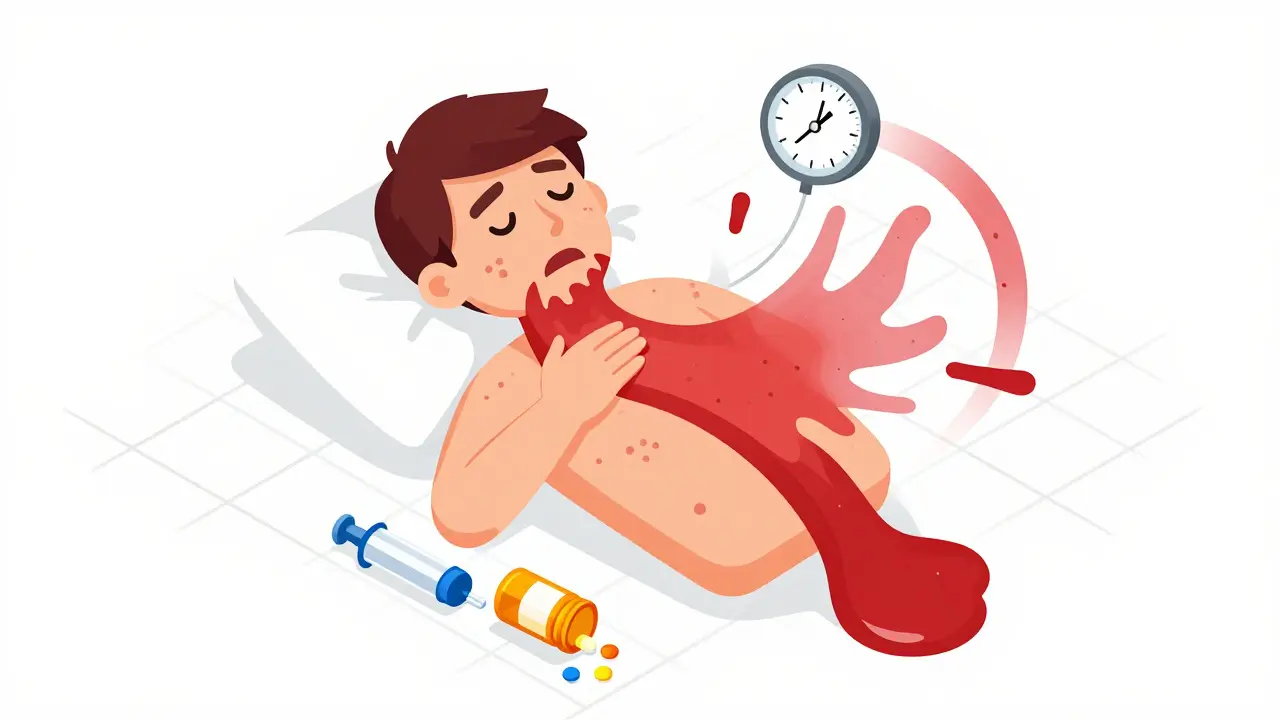Side Effects: What They Are and How to Handle Them
If you’ve ever taken a new pill and felt weird, you’ve experienced a side effect. They’re the body’s way of reacting to a drug, and they can range from a mild headache to a serious allergic reaction. Knowing what to expect and how to react can keep you from panic‑shopping for last‑minute solutions.
Most side effects show up in the first few days of treatment, but some only appear after weeks of use. The key is to pay attention to how you feel, read the label, and keep a short journal of any new symptoms. A quick note can help your doctor decide whether the drug is still right for you.
Common Everyday Side Effects
Everyday meds have a predictable set of reactions. For example, Rogaine (minoxidil) often causes scalp irritation, while Flibanserin may lead to dizziness or nausea. Even over‑the‑counter products aren’t exempt – mixing alcohol with common painkillers or antidiarrheals like Imodium can cause stomach upset or more serious complications.
These mild reactions usually fade as your body adjusts. If they linger past a week, or if they get worse, it’s time to call your pharmacist or doctor. Simple fixes like taking the pill with food, staying hydrated, or switching to a different formulation can make a big difference.
When a Side Effect Becomes a Warning Sign
Some reactions demand immediate attention. Shortness of breath, swelling of the face or lips, rapid heartbeat, or severe rash could signal an allergic reaction. In the case of Atomoxetine, watch for sudden mood changes or depressive thoughts – these are red flags that need professional help fast.
For blood thinners like apixaban, any unexpected bleeding (bruises, nosebleeds, dark stools) should be reported right away. The same goes for antibiotics like metronidazole (Flagyl): severe nausea, liver pain, or a metallic taste that doesn’t go away could mean your liver needs a check.
When you notice a serious symptom, stop the medication if you can do so safely and seek medical advice. Having the original prescription handy makes the conversation smoother.
Practical Tips to Reduce Unwanted Effects
1️⃣ Read the patient information leaflet – it lists the most common and most serious side effects. Skip the fine print and focus on the bold headings.
2️⃣ Start low, go slow – if you’re trying a new drug, ask if a lower dose is possible at first. Many side effects are dose‑dependent.
3️⃣ Track symptoms – write down the date, time, and what you felt. A simple table in your phone can save a lot of guesswork later.
4️⃣ Check interactions – before you add a supplement (like zinc or riboflavin) or an OTC product, search for drug‑drug interactions. Even natural herbs can amplify side effects.
5️⃣ Stay in touch with your healthcare team – a quick call or message can clarify whether a symptom is normal or a sign to switch meds.
By staying proactive, you turn side effects from scary surprises into manageable clues about how your body is handling a medication. Remember, the goal isn’t to avoid all side effects – it’s to keep the benefits of treatment outweighing the risks.
Explore our deeper dives on specific drugs for more details: Flibanserin’s side effect profile, Rogaine’s scalp reactions, Atomoxetine and depression risk, and OTC drugs that shouldn’t mix with alcohol. Each article breaks down the science, shares real‑world stories, and offers practical steps to stay safe.
Got a question about a reaction you’re having? Drop a comment or start a chat with one of our pharmacists. Staying informed is the best medicine you can take.
When Side Effects Warrant Stopping a Medication Immediately
Some medication side effects are emergencies that require stopping the drug right away - like anaphylaxis or skin blistering. Others are annoying but safe to manage with your doctor. Know the difference to avoid life-threatening mistakes.
Alavert: Complete Guide to the Popular Allergy Pill
Discover what Alavert is, how to use it, dosage guidelines, side effects, and how it stacks up against other antihistamines - all you need in one guide.
- 17
- Read More
Risperdal: What You Should Know About This Antipsychotic Medication
Risperdal, known by its generic name risperidone, is prescribed for conditions like schizophrenia, bipolar disorder, and irritability associated with autism. This article digs into how Risperdal works, its benefits, potential risks, and recent controversies. You'll get practical advice and clear facts on what to expect when using Risperdal. Read on to learn everything you should know before starting or continuing with this medication.
- 15
- Read More


